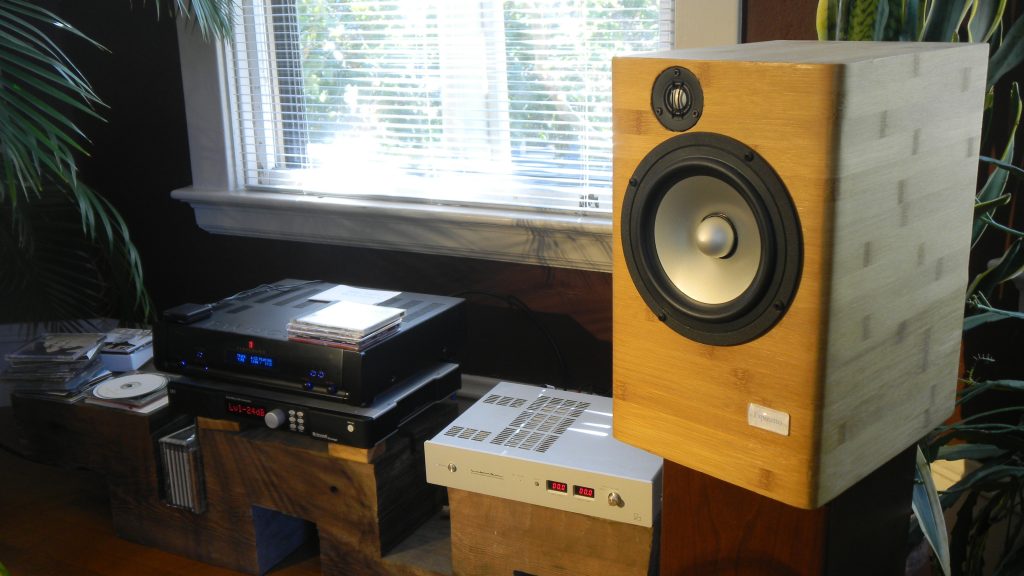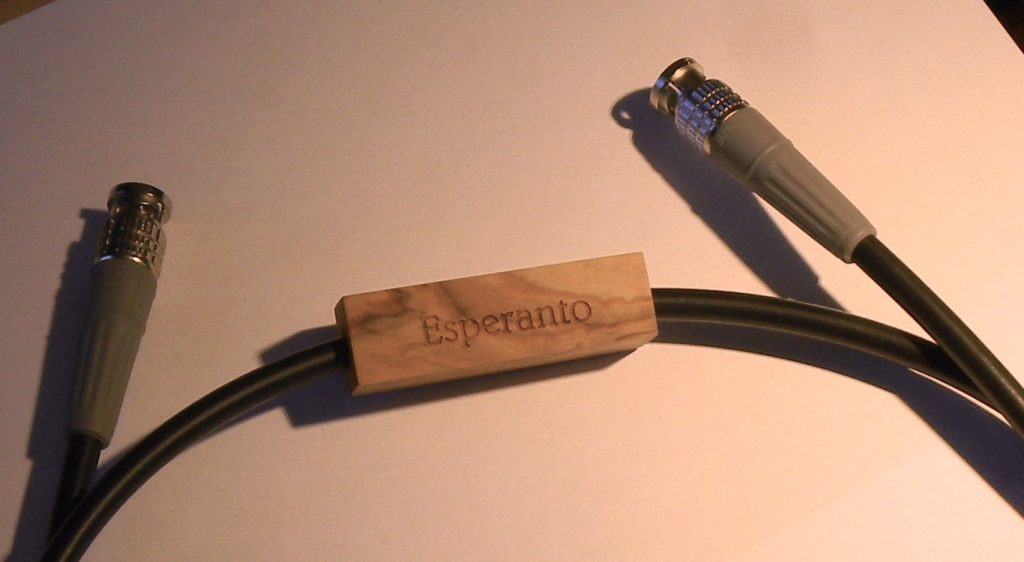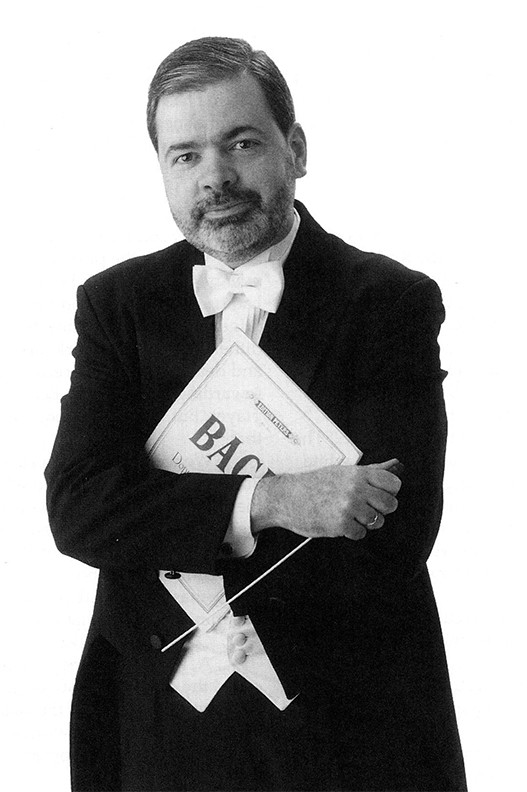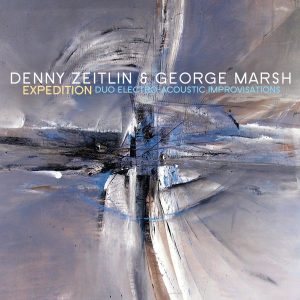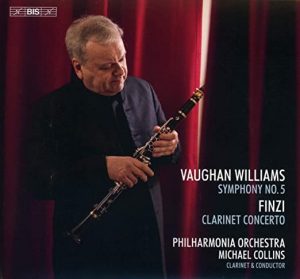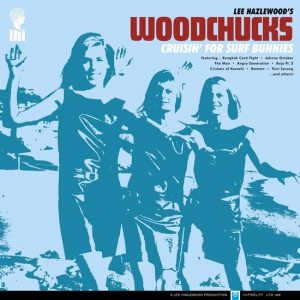Our good friend John Marks of The Tannhauser Gate continues his collection of re-published essays here at Positive Feedback. In this one, he makes us aware of a wonderful musical resource in the online archive of recordings from none other than Steinway. What a fine and generous opportunity this is!
Many thanks to John for bringing this to our attention.
Dr. David W. Robinson, Ye Olde Editor
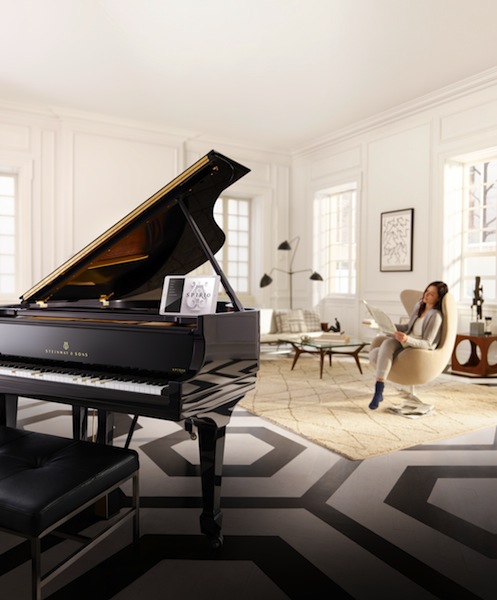
Steinway & Sons' Spirio Playback Piano. Image courtesy of Steinway.
I felt a rueful twinge when legendary piano builder Steinway & Sons took itself private and as a result was de-listed from the New York Stock Exchange. My nostalgic or sentimental reason was that Steinway & Sons' NYSE stock-ticker symbol long had been LVB, an homage to Ludwig van Beethoven. Beethoven's piano sonatas are generally regarded as the distilled essence of greatness in piano music.
Apart from that, as far as I can tell, jumping out of the goldfish bowl that is the NYSE has done wonders for Steinway. In 2014, Steinway came out with the Spirio, a piano (available in two sizes) that includes the most sophisticated piano-playback technology (a non-MIDI system) ever to reach commercial critical mass. More recently, Steinway has begun offering a record-and-playback version of the Spirio. Steinway's biggest challenge at the moment is building enough Spirio pianos to meet the demand. Good for them.
Under New Management, Steinway also launched their own CD label (they have also released a few SACDs). They embarked upon an ambitious recording agenda, for which they built a new, state-of-the-art performance-and-recording hall. So that you can hear the complete recordings before you buy the CDs or download the audio files, Steinway has created a dedicated streaming site that offers commercial-free play of complete albums from Steinway & Sons Recordings. There are also informative reviews posted for many of the albums. Steinway & Sons CDs are available from Amazon; hi-res files, from 24/44.1 to 24/192 (varying by title) are available from HDTracks.
I asked Eric Feidner, Steinway's VP for Music, Media, and Technology, to tell me about what "getting into the record business" has meant for the 166-year old firm.
"At Steinway, our very long history with performing artists goes back to the 1800s, with legendary pianists such as Anton Rubinstein and Ignace Paderewski. In recent decades, the "Steinway Artist" program has been a central part of the company. We started the record label about 10 years ago as a natural outgrowth of our relationships with Steinway Artists.
As we moved into the development of the Steinway Spirio, we faced a critical need to create a catalog of "high resolution" music to embed in the world's finest player piano—we send our Spirio owners new playlists every month. Because there was no such content available elsewhere, we had to build our own. There are now close to 4,000 works in the Spirio catalog.
The Spirio piano's development and the Spirio catalog's development processes inevitably became symbiotic with the record label, as through these, we developed techniques to produce commercial audio recordings with far greater efficiency and with remarkably consistent levels of technical and sonic quality. Making recordings and building pianos are now very closely intertwined at Steinway & Sons."
Below are recommendations for a baker's dozen (13) great CDs that you can hear in their entirety at no cost!
These recommendations are ranked by my personal estimation of how wide each recording's appeal might be.
What that means in practice is that I think that Alan Feinberg's Basically Bull (#1) should appeal to almost all music lovers, while Jenny Lin's 2-CD set of the piano music of Artur Schnabel (#13) might appeal to a somewhat more specialized audience. I keep my comments minimal, in large part because Steinway makes it so easy to hear the music. To get to each recording's specific page on the Steinway Streaming website, just click on the album's name (in bold).
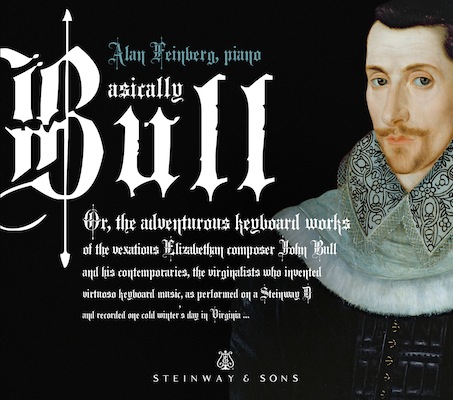
1. Basically Bull / Alan Feinberg
This survey of early British keyboard music (some of the scores date back to 1611) composed for the virginals should not work on a Steinway concert grand, but it does. Comparisons to Glenn Gould and André Watts are not out of line. When Basically Bull was a new release, I praised it to the skies in Stereophile magazine, concluding, "Even if the last solo-piano recording you really enjoyed was George Winston's December, I think you'll love Basically Bull. Highly recommended."

2. Watercolor / Shen Lu
I wrote earlier on The Tannhäuser Gate, "My favorite pianists are those who seem to be able to defy the physical limitations of the piano to create the illusion that a musical line is being sung. 'Thunderers' leave me cold… The good news is that Shen Lu does not 'play like a competition winner.' Mr. Shen plays like a mature artist who understands the music and whose technique is effortless. His formidable technique calls attention to itself only when musically appropriate."
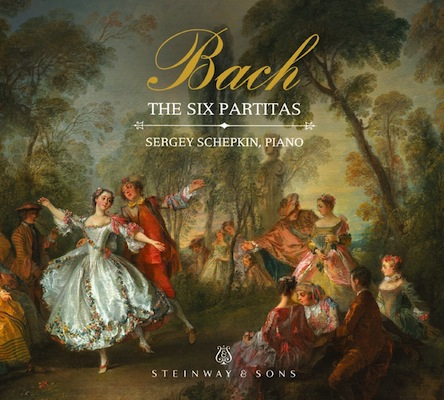
3. Bach: The Six Partitas / Sergey Schepkin (2CDs)
I wrote earlier on The Tannhäuser Gate,"Familiarity with at least some of Bach's masterworks is a matter of core Cultural Literacy, and the Partitas are on that list. Sergey Schepkin's new set–the playing, recorded sound, and presentation are world-class–is as good an introduction as any; and for those who already have a favorite set, well worth comparing and pondering."
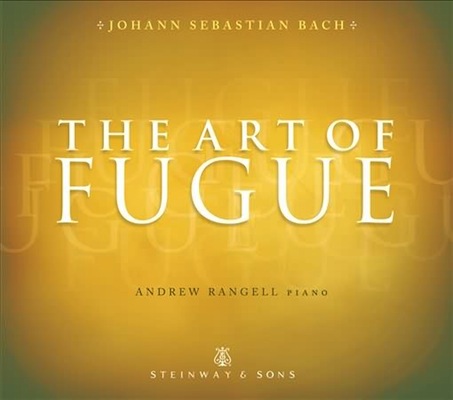
4. Bach: The Art of Fugue / Andrew Rangell
Dmitri Shostakovich once asked Rodion Shchedrin the "Desert Island Score" question: Were Shchedrin to be exiled to a deserted island and could bring only one score with him, which would it be? Shchedrin's answer was prompt: J.S. Bach's The Art of the Fugue. When Shchedrin then turned the question on him, Shostakovich answered, "Das Lied von der Erde, by Mahler." The relevance being that the only books in Mahler's composing hut were the set of Johann Nikolaus Forkel's survey of Bach's works. Another Bach work that is in the canon of core Cultural Literacy.
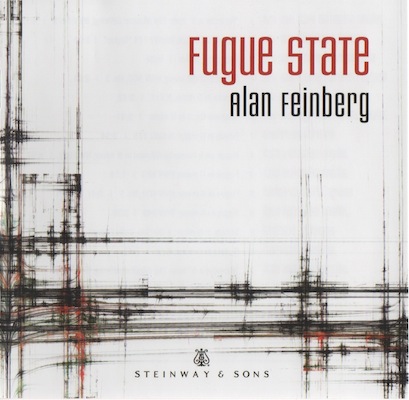
5. Fugue State / Alan Feinberg
I wrote earlier here, on The Tannhäuser Gate, "Fugue State is a carefully selected program of fugues from two centuries of the High Baroque. Chronologically, the composers range from Froberger (b. 1616) through Buxtehude (b. 1637) and Alessandro Scarlatti (b. 1660), to J.S. Bach, Domenico Scarlatti, and Handel; all of whom were born in the year 1685. However, Fugue State's program is not chronological. It begins and ends with the sprawling three- and six-part 'ricercars' that begin and end Bach's The Musical Offering (BWV 1079). 'Ricercar' is a formal term that encompasses several compositional techniques predating the fugue; but the form continued as a special case of fugues. (The Musical Offering is one of the few Bach masterpieces that I think are fair to call 'under-appreciated.') Other pieces from Bach and from the other composers make up Fugue State's generous playing time of 64 minutes."
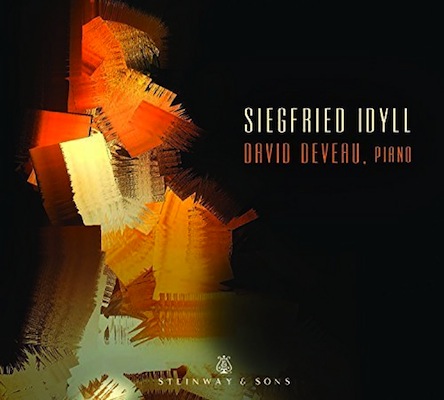
6. Siegfried Idyll / David Deveau
I can't help but quote myself on this one:
A thought-provoking program, this certainly is!
The 1800s were not only a time of political and artistic ferment; there was a whole lotta bad lovin' goin' on.
The most charismatic performer of the day (after violin whiz Niccolò Paganini), was piano whiz Franz Liszt. Liszt's only daughter Cosima married Liszt's star student Hans von Bülow; and no slouch he. Von Bülow, not Liszt. But you already knew that. If that surname strikes a bell, you may be remembering Danish socialite Claus von Bülow, who twice stood trial in Rhode Island for the attempted murder of his wife Sunny. The juvenile-fiction author whose nom de plume is Lemony Snicket appropriated the names Sunny and (perhaps for legal reasons) Klaus for two of the Baudelaire children in the series A Series of Unfortunate Events.
Poor Hans conducted the premières of both Wagner's Tristan and Isolde, and of Die Meistersinger von Nürnberg. And I am sure he did not sight-read either of those scores… .
Malfortunately-like (as we would say in the South) Wagner paid von Bülow back in Wagner's customary coin, by stealing von Bülow's wife. I have written about that aspect of Wagner's character before. Liszt, as they say up at Harvard, was unsmiling.
Liszt's daughter Cosima gave birth to Wagner's only son, Siegfried. ("Cosima" is also the name that the non-fictional Claus gave to his daughter with Sunny von Bülow.) Wagner composed a serenade, the Siegfried Idyll for 13 musicians, to be played as a birthday surprise for Cosima.
One of Wagner's musical assistants, a poor lost soul named Josef Rubinstein (no relation to anyone famous) made several versions, including the solo-piano transcription heard on this CD. It is remarkable for its musical clarity, but, as importantly, it is neither the first not last piece on the program. The first piece is Liszt's Funérailles, for the revolutionaries killed in 1848. That, in a sense, creates a link between future involuntary father-in-law and second son-in-law.
Liszt obviously was annoyed that this parvenu of dubious talent had seduced his daughter away from her duly-wedded good guy. But reconciliation eventually took place (perhaps aided by the grandchild). The program ends with Liszt's "At the Grave of Richard Wagner" (1883), which, while quoting Wagner's last completed opera Parsifal, veers off in the direction of atonality and toward the sense of (or dread of) cosmic emptiness that appears in Mahler's last symphonies.
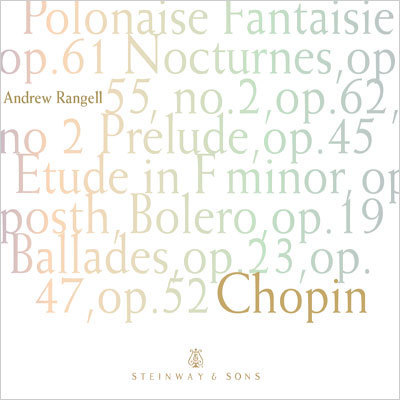
7. Chopin Recital / Andrew Rangell
This recording (as was David Deveau's Siegfried Idyll, #6 immediately above) was made at the Shalin Liu Center in Rockport, Massachusetts, which is both visually and acoustically beautiful. There are 2,509 Chopin recordings available, so there is no shortage of competition. What makes this one unquestionably recommendable is truly wonderful recorded sound, deeply-thought-out as well as deeply-felt interpretations, and technique, as they say, "to burn." In addition to one Prelude, two Nocturnes, and three Ballades (all recorded hundreds of times) there's the rarity "Bolero" (who knew?); one of the Nouvelle Etudes; and also the hard-to-categorize Polonaise-fantasie in A-flat major. So, an unusually thought-provoking program by an interpreter who arrived at Chopin only after immersing himself in Bach and Beethoven. If that makes these interpretations "idiosyncratic," then idiosyncrasy is what we need more of.

8. Get Happy / Jenny Lin
What an enjoyable recording! Jenny Lin turns to a program (mostly) of virtuoso arrangements of show tunes. But there is one film-score tune thrown in (Marc-André Hamelin's atmospheric re-imagining of the theme from the movie "Laura," which started out as an instrumental, but was so popular that words were added later, to the everlasting gratitude of Frank Sinatra). Moreover, some of the works go beyond being mere "arrangements." The chief example of that is Stefan Malzew's "Eliza in Ascot," which is a suite of variations on themes from "My Fair Lady." Of course, the familiar brilliantly glittering Earl Wild gems are on display. Take the album's title at face value, and Get Happy!
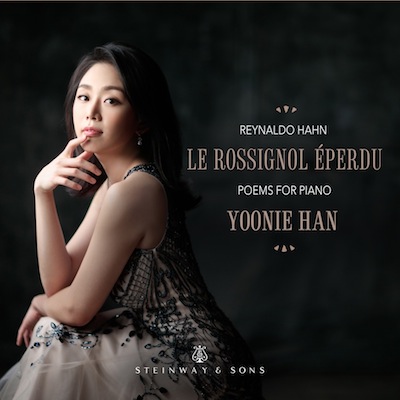
9. Reynaldo Hahn: Le Rossignol Eperdu / Yoonie Han (2 CDs)
My guess would be that today, the name Reynaldo Hahn would mean more to a student of Comparative Literature than it would to many students of Music History. That's because Hahn was Marcel Proust's, for lack of a better word, muse. Hahn (1874-1947) was a Venezuelan child prodigy who wrote his first songs at age eight and who was admitted to the Paris Conservatory at age 10. His teachers included Massenet, Gounod, and Saint-Saëns; his classmates included Cortot and Ravel. Hahn's delightful piano miniatures from 1912 (there are 53 of them) do sound like one might expect early 20th-century Parisian progressive music to sound like. Perhaps the best description would be, "Satie—but without the weirdness, the irony, or the belabored inside jokes."
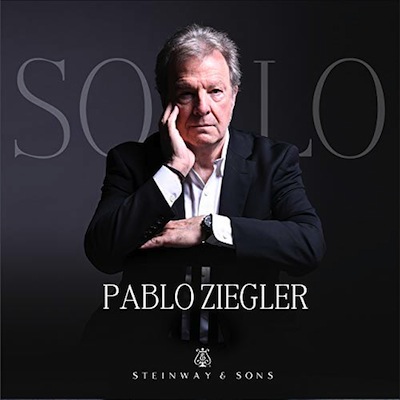
10. Solo / Pablo Ziegler
Pablo Ziegler is an Argentine composer and pianist perhaps best known in the US for the decade-plus he spent as one of the sonic and musical anchors of Astor Piazzolla's Quinteto Tango Nuevo. This solo recording displays Ziegler's full-bodied tone, fearless virtuosity, and completely-committed musicianship. Another fantastic recording job from Steinway & Sons, is all I can say. Just get a listen to "Oblivion," Piazzolla's elegiac piece from the soundtrack to the movie version of Pirandello's play Henry IV. The HDTracks download of Solo is 24/192—just buy it! (If there is a better example of recorded piano sound, please tell me about it.)
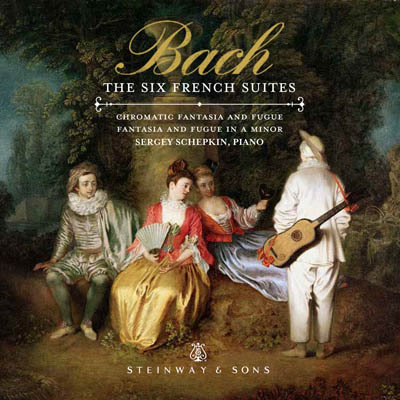
11. Bach: The Six French Suites / Sergey Schepkin (2CDs)
I can't say it better than did Bryce Morrison, writing in The Gramophone:
Such telling scholarship is complemented by playing devoid of egocentricity, elaborate gesturing and agogic accentuation, in which everything is made seamless and natural, though with no loss of character. Bach is always allowed his own voice, a far cry from the justly celebrated Bach of Gould or Tureck, where touches of genius are qualified by eccentricity (Gould) and pedantry (Tureck).
Schepkin is gentle and heart-warming in the Second Suite's Allemande, lively but unforced in the Courante. There is a special sense of joyousness in the Fifth Suite, where in the final Gigue his sparkle declares his enviable technique, though one never on display for its own sake. Try the Courante from the Sixth Suite for an example of Schepkin's effortless-sounding command or the Gavotte for an irresistibly perky rhythmic spring.
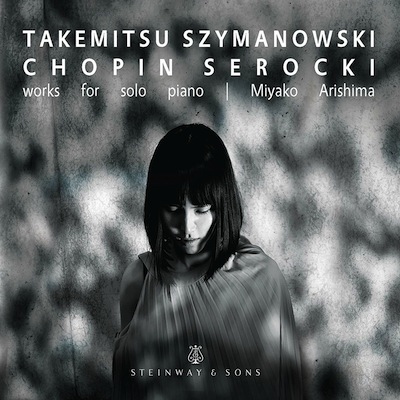
12. Takemitsu, Szymanowski, Chopin, Serocki / Miyako Arishima
Her bio states "Born in Hitoyoshi City, Kumamoto Prefecture, Mikyako Arishima started playing the piano from the age of two. After graduating from Toho Women's High School Music Department, Arishima studied at the Bydgoszcz Conservatory in Poland where she completed her undergraduate and master's degrees. In 2013, she won the Music Festival Award at the 3rd Kirishima International Music Festival, and in the same year won the 5th place at the 10th Darmstadt International Chopin Piano Competition."
Which goes a long way to explaining the programming choices in this, the most adventurous piano-début recording I can think of. A suitably atmospheric piece by Toru Takemitsu kicks off what is otherwise a three-part survey of Polish piano music: Classical, Modern tonal, and Modern atonal. The composers being Chopin, Szymanowski, and Serocki.
As Science Officer Spock would say: "Fascinating." (Not recorded by Steinway, but excellent sound nonetheless.)

13. Artur Schnabel: Complete Piano Music / Jenny Lin (2CDs)
Artur Schnabel is known to history primarily because it was he who was first to record all 32 of Beethoven's piano sonatas (for HMV, at Abbey Road, from 1932 to 1935). (On a Bechstein, alas.) Schnabel's teacher had been a student of a student of Beethoven's. It's hard to get closer than that, especially if we are talking about living into the age of recorded sound. It's perhaps over-generous to say that Schnabel is better-known as a performer than a composer, because he is essentially unknown as a composer. This remarkable recording goes a long way in explaining why Schnabel was no Gershwin when it came to counting the box-office receipts.
In a very perceptive review of this 2-CD set by Lynn René Bayley of Art Music Lounge (posted on Steinway Streaming) the question is asked about Schnabel as a composer, "Was it Schnabel's fault that he was 35 years ahead of his time?" The context is, that that question comes after mentioning that the "free-form" introduction to one piece contains a "Thelonius Monk-like chord."
But for those who are not that adventurous, this compilation closes with Schnabel's arrangements of four Old Viennese Waltzes by Johann Strauss. One of my motivations for calling attention to this recording is because it makes the statement that Steinway is not sticking to the tried-and-true virtuoso (or competition) repertory. And as far as Ms. Lin's playing and interpretations go, I can't imagine these pieces being played any better.




